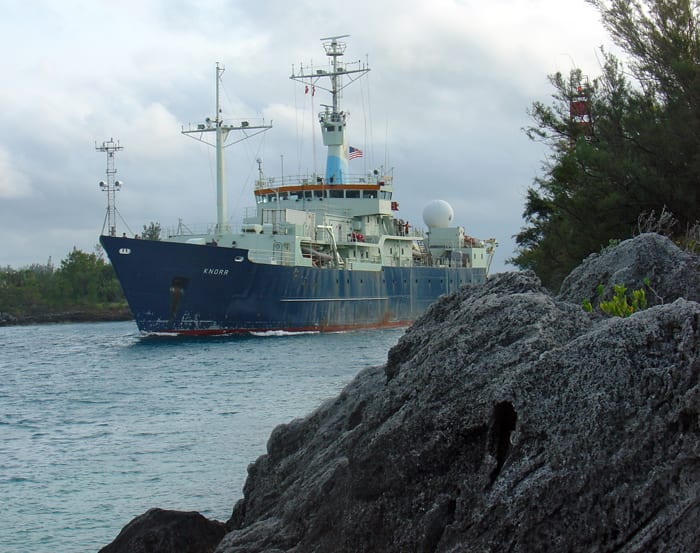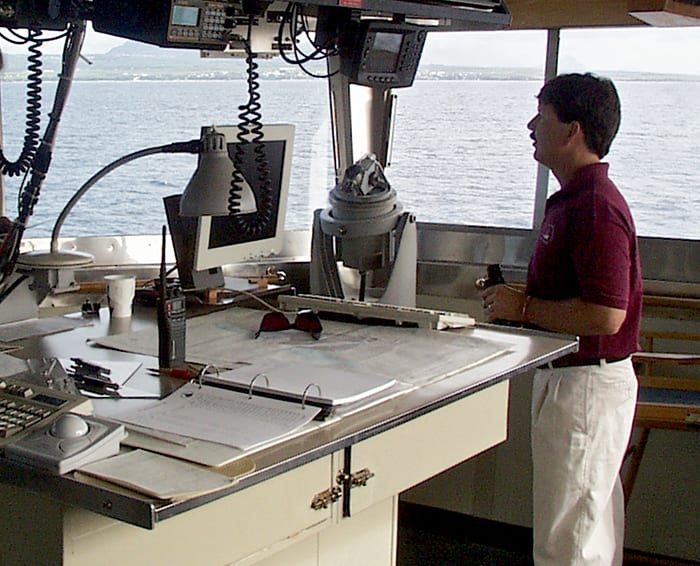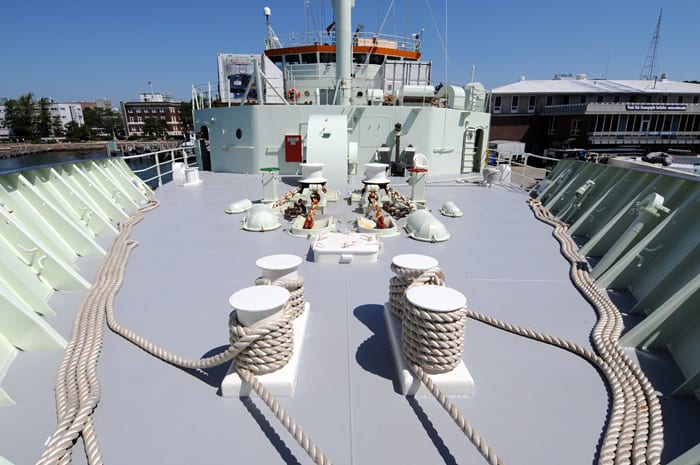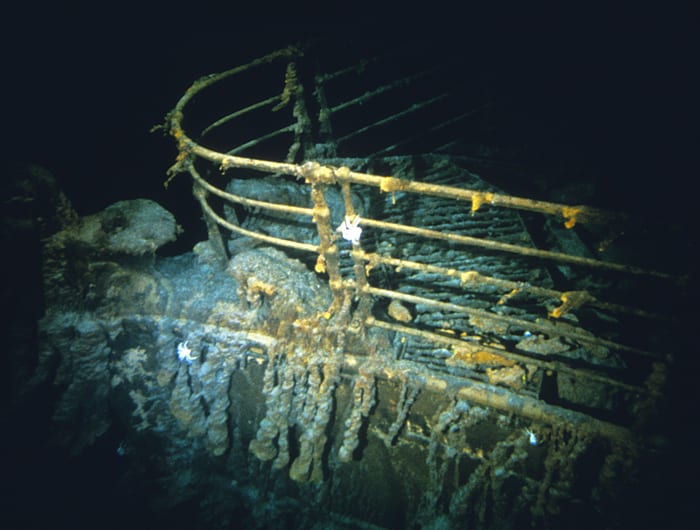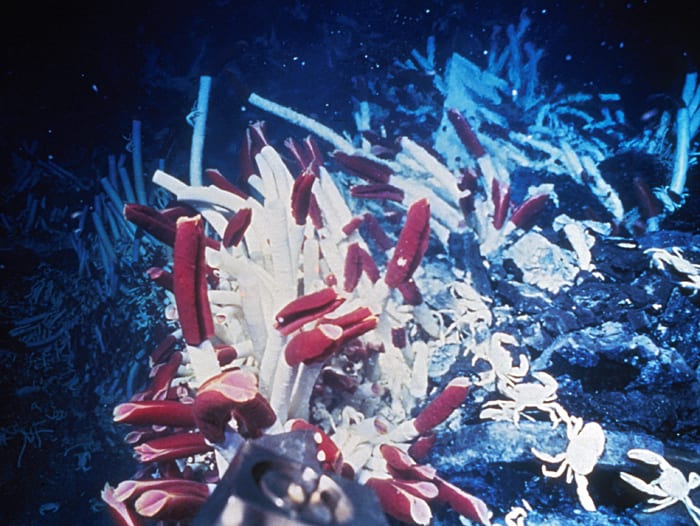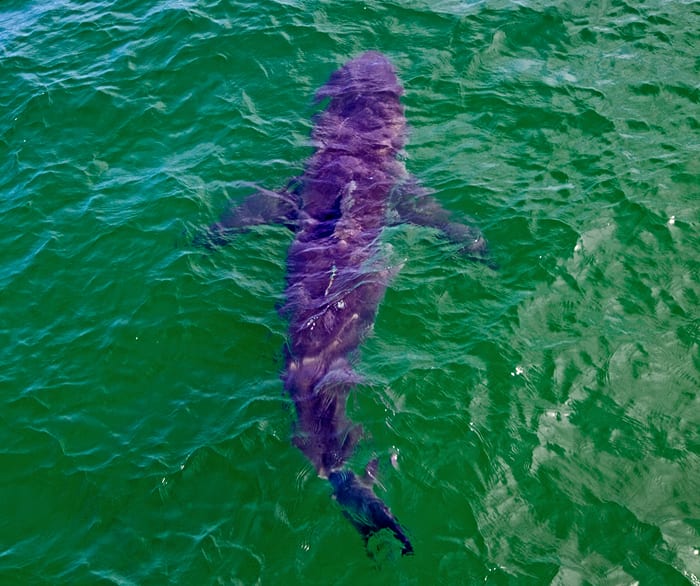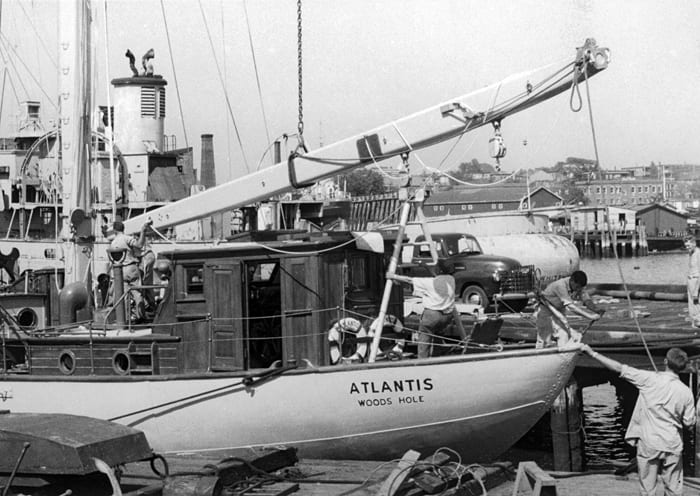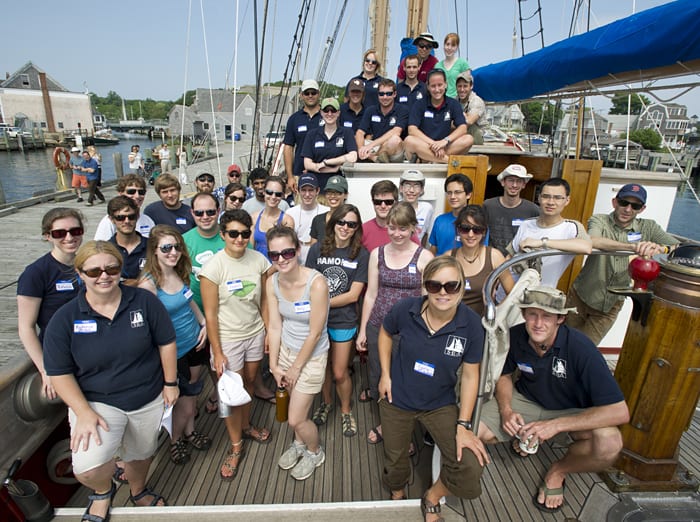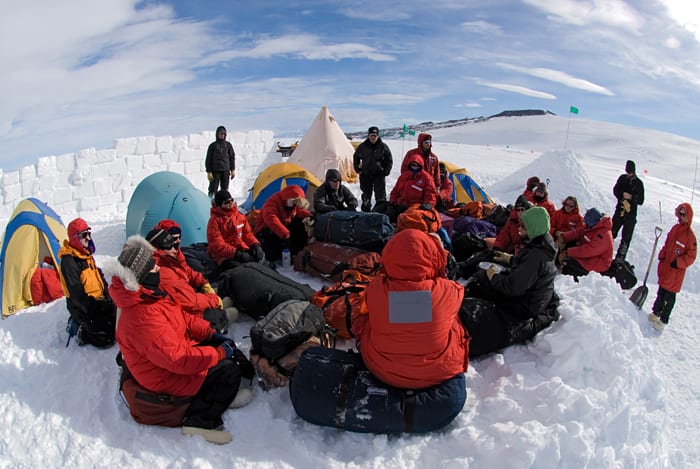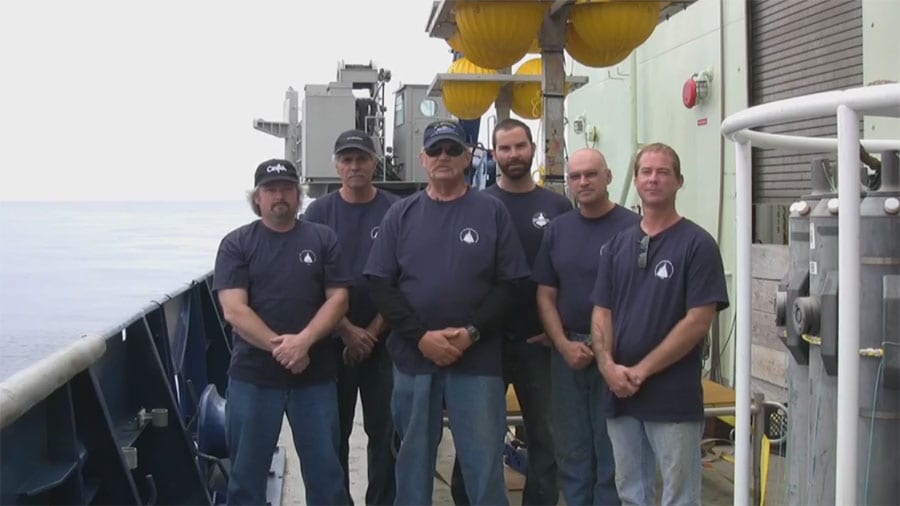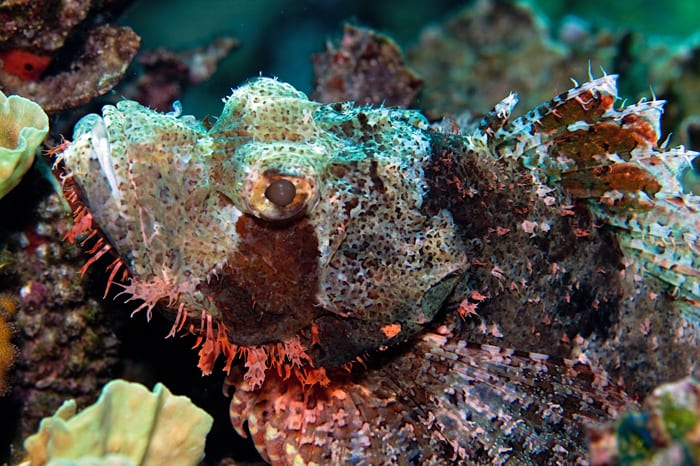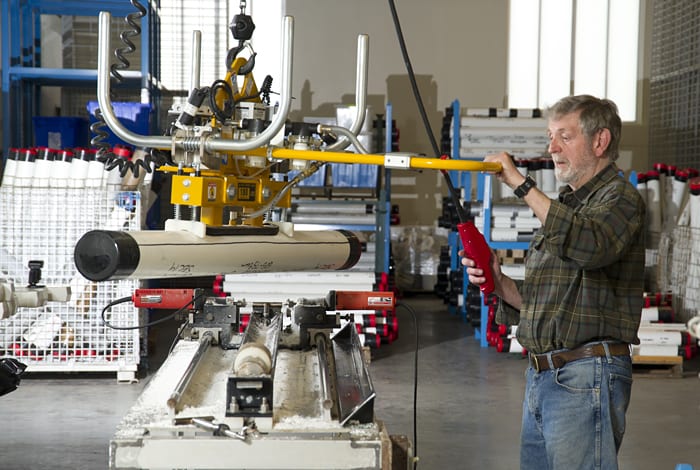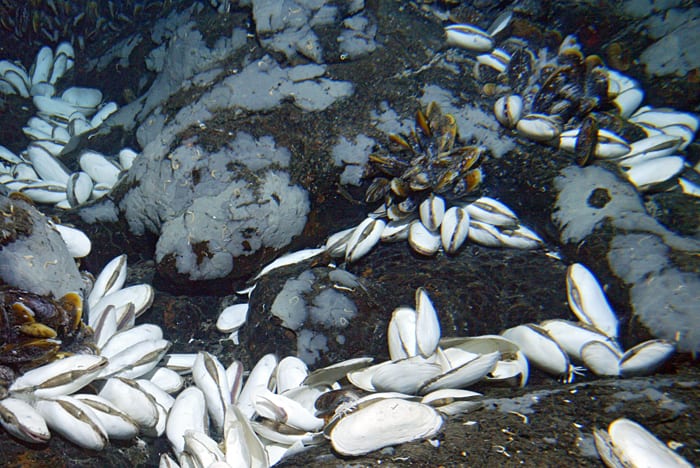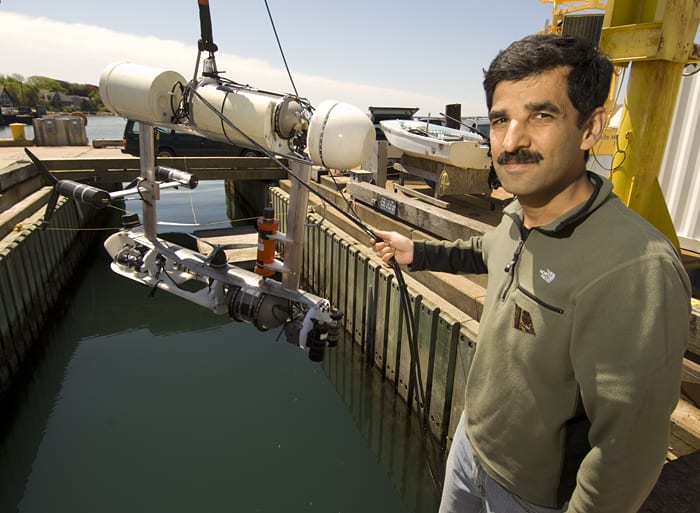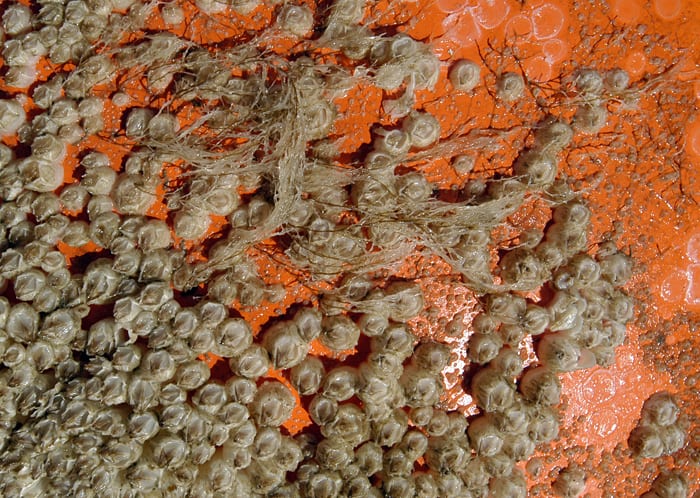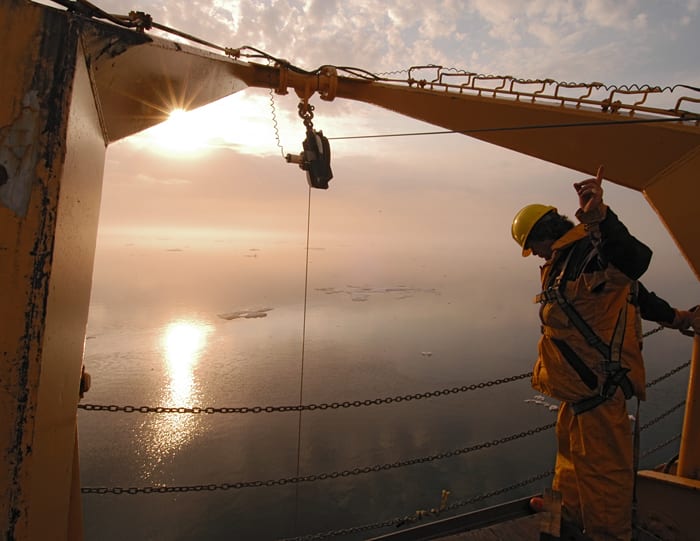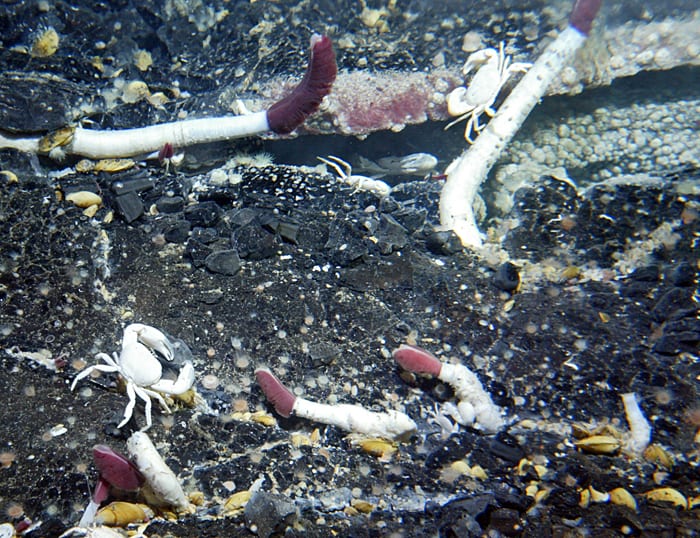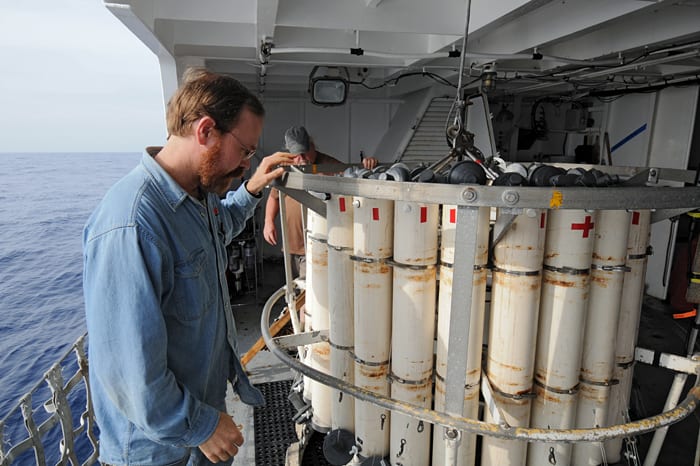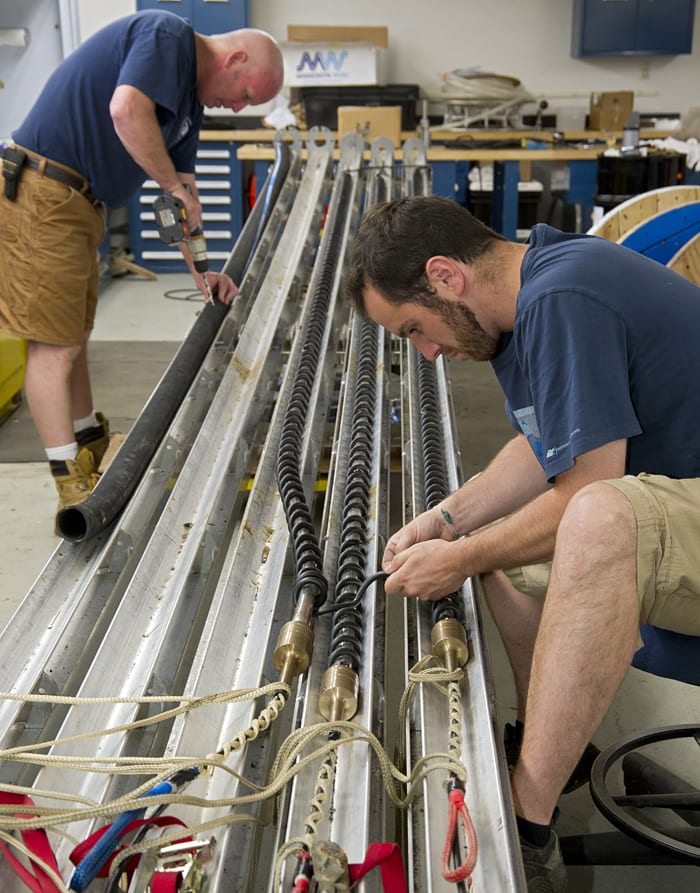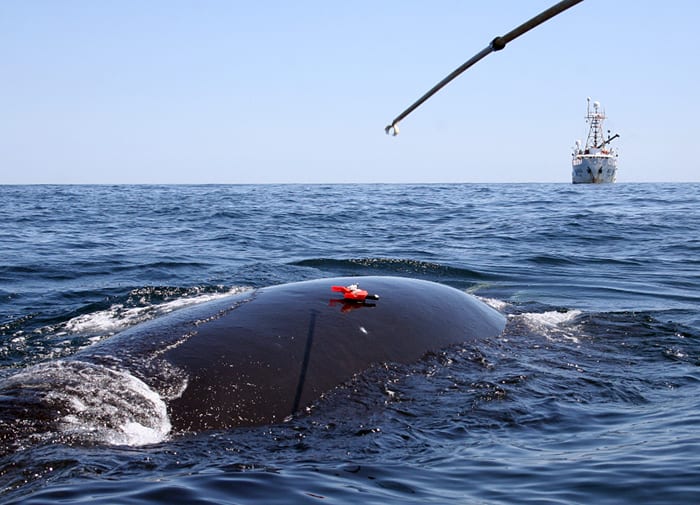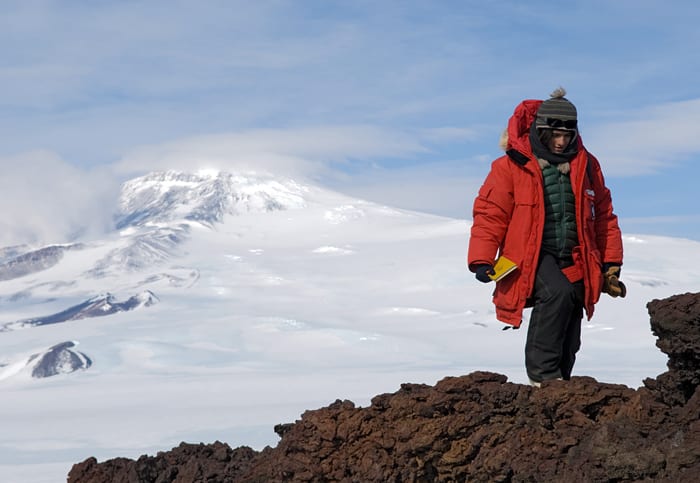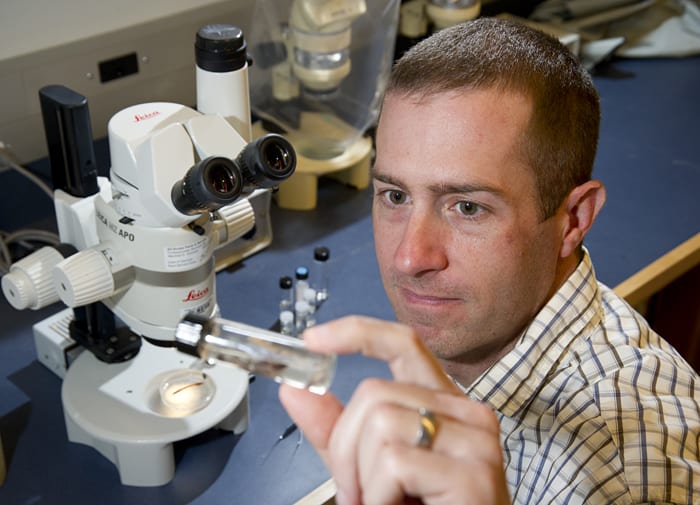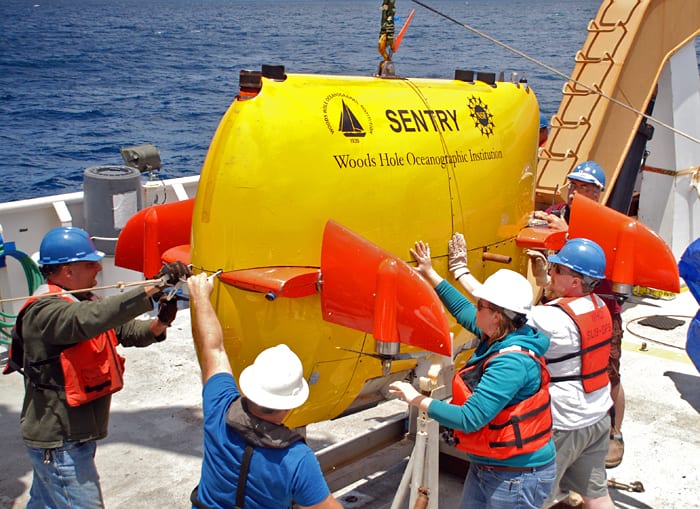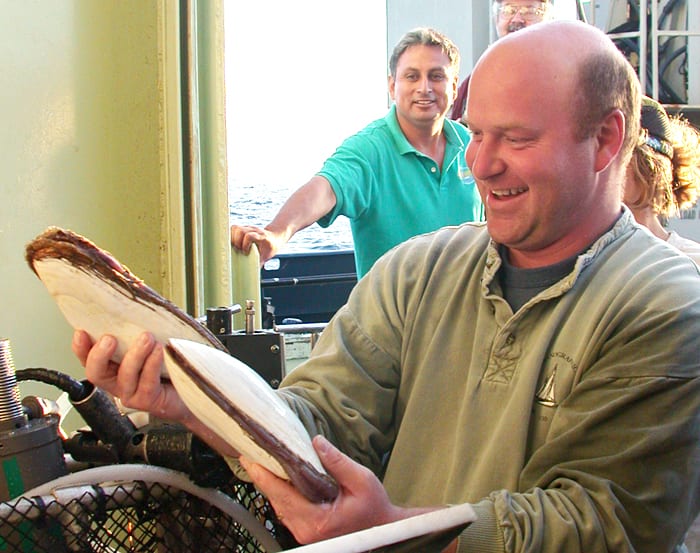Multimedia Items
Tour the Knorr!
Take advantage of a unique opportunity today, August 7, to tour the global class research vessel R/V Knorr. Rain or shine, the public is invited to Woods Hole, to learn…
Read MoreCaptain at Work
Former captain of R/V Knorr and current captain of R/V Atlantis, A.D. Colburn, is shown at work on the bridge of the Knorr. Captain Colburn commanded the ship for 10…
Read MoreShipshape
After 43 years of service in oceans around the world, and two major renovations, the research vessel Knorr still looks sharp, as this view looking aft from the bow shows.…
Read MoreReaching Titanic
On September 1, 1985, scientists working on board the R/V Knorr captured the first photographs of the wreck of the RMS Titanic in the North Atlantic beneath more than 12,400…
Read MoreGame-Changing Discovery
In 1977 during dives to the Galapagos Rift in the East Pacific, a team of geologists working aboard R/V Knorr and Lulu, the support ship for the submersible Alvin, see…
Read MoreSharks on Cape Cod
This white shark was spotted off Chatham during a tagging cruise in 2010.During the last few summers the number of white sharks on Cape Cod appears to have increased. The presence…
Read MoreRe-fitting Atlantis
A work crew fits the boom to R/V Atlantis‘ new mizzen mast in this undated photograph from the Munro Shipyard in Chelsea, Mass. Atlantis served as WHOI’s globally ranging oceanographic…
Read MoreReady to Set Sail
A group of graduate students in the MIT/WHOI Joint Program gather on the deck of the (SSV) Corwith Cramer alongside the ship’s crew for the start of the 2011 Jake…
Read MoreHappy Campers
During Polar Discovery Expedition 3 in 2007, scientists and students ventured to Antarctica to study the geology and biology of the southern continent. At the start of the expedition, 20…
Read MoreAtlantis to Atlantis: Well Done
The science party and crew of R/V Atlantis send a special message to the crew of the space shuttle Atlantis. The two vessels are linked by a legendary namesake–the original…
Read MoreSteer Clear
A tassled scorpionfish (Scorpaenopsis oxycephala) lies camouflaged on a coral reef in Kimbe Bay, Papua New Guinea. These carnivorous fish—known for their venomous spines—often wait in disguise for prey to…
Read MoreFirst Cut
In the WHOI Core Lab, retiree and volunteer George Heimerdinger moves a length of sediment core encased in PVC pipe to the core splitter, where the PVC will be split…
Read MoreOnce More Unto the Rift
Giant clams up to one foot long thrive in the crevices around seafloor pillow lava, which vent hydrothermal fluids with chemical nutrients. This vent site in the Pacific on the…
Read MoreMapping the seafloor
Autonomous under water vehicles (AUVs) have become an ever present tool used by oceanographers. Here ocean engineer Hanumant Singh, tests SeaBED, the autonomous underwater vehicle (AUV) designed and built by…
Read MoreBarnacle Buoy
Instruments, buoys, and rigging lines placed in the sea attract a wide variety of organisms. After 13 months in the Chukchi Sea north of Alaska, this orange float sported a…
Read MoreNight Shift
With the nighttime Arctic sun as a backdrop, Hugh Maclean of Canada’s Institute of Ocean Sciences signals to the winch operator during deployment of a CTD (conductivity-temperature-depth) instrument in the…
Read MoreRevisiting the Roses
Discovered in 1979 not far from the Galápagos Islands, the Rose Garden was an ocean scientist’s paradise, a hydrothermal vent site where six-foot tubeworms swayed in the shimmering breeze of…
Read MoreOne Last Check
Marine chemist Ken Buesseler (left) and University of Hawaii technician Paul Balch make a final inspection of a rosette sampler prior to deploying the instrument. Buesseler organized the cruise aboard…
Read MoreDispatches from the Arctic
Engineering Assistants Jim Ryder and Jeff Pietro assemble the tether of an Ice-Tethered Profiler (ITP). ITPs operate autonomously to acquire temperature and salinity measurements from the upper ocean under sea ice…
Read MoreRight Whale Ecology and Conservation
WHOI biologist Mark Baumgartner attaches an archival suction-cup tag to a North Atlantic right whale while the NOAA Ship Delaware II stands ready to begin environmental sampling in proximity to…
Read MoreHigh Up Down Under
Bundled against frigid Antarctic gales, MIT/WHOI Joint Program graduate student Andrea Burke strides over lava-strewn terrain around Mount Morning, an extinct volcano about 800 miles from the South Pole. In…
Read MoreLooking at Larval Fish
Joel Llopiz, a postdoctoral scholar in the WHOI Biology Department, studies how ocean food webs may differ at different latitudes. Working with fish ecologist Simon Thorrold, Llopiz analyzes isotopes in…
Read MoreSentry Lends a Hand in the Gulf
One year ago, oil from the Deepwater Horizon oil rig finally stopped flowing into the Gulf of Mexico. In December 2010, the autonomous underwater vehicle (AUV) Sentry ventured to the…
Read MoreHappy as a Giant Clam
Tim Shank, a biologist at Woods Hole Oceanographic Institution (WHOI), was thrilled to get samples of giant clams retrieved by the Alvin submersible during a 2002 expedition to the Galápagos…
Read More
